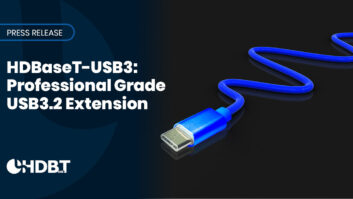
Whenever a new technology is announced, it’s not always 100% clear at the outset what impact it will have on the various markets in which it might appear. That’s true of a recent announcement from Intel and its implications for the professional audiovisual market. Intel has announced Thunderbolt technology, a new high-speed PC connection technology that brings together high-speed data transfer and high-definition (HD) display on to a single cable. Running at 10Gbps, Thunderbolt technology can transfer a full-length HD movie in less than 30 seconds. This Intel-developed technology is coming to market through a technical collaboration with Apple, and is available first on Apple’s new line of MacBook Pro laptop computers.
What’s missing from Intel’s announcement is any reference to HDMI – which some commentators have interpreted to mean that, potentially, HDMI’s future looks bleak. Similarly, there is no mention of DVI, with Intel apparently having chosen to put its weight behind DisplayPort – a technology that has always been more associated with the Apple world and the PC world.
Intel says that its vision for Thunderbolt technology (formerly codenamed “Light Peak”) is to move media faster, simplify connections between devices, and foster new and exciting ways to build and use PCs. Combining high-speed data and HD video connections together onto a single cable is instrumental to achieving that vision. Thunderbolt technology delivers this via two communications methods, or protocols – PCI Express for data transfer and DisplayPort for displays. PCI Express has the flexibility to connect to almost any type of device, and DisplayPort can drive greater than 1080p resolution displays and up to eight channels of audio simultaneously. Thunderbolt technology is compatible with existing DisplayPort displays and adapters. All Thunderbolt technology devices share a common connector, and let individuals simply daisy-chain their devices one after another, connected by electrical or optical cables.
Thunderbolt, then, addresses the very high speed connectivity of devices. Not only might it displace HDMI – so long as it can provide the necessary copy protection support – but also USB. While neither HDMI nor USB could be said to be core technologies for the professional AV world, they’re important enough to warrant keeping a close watch on any technology that might displace them.







